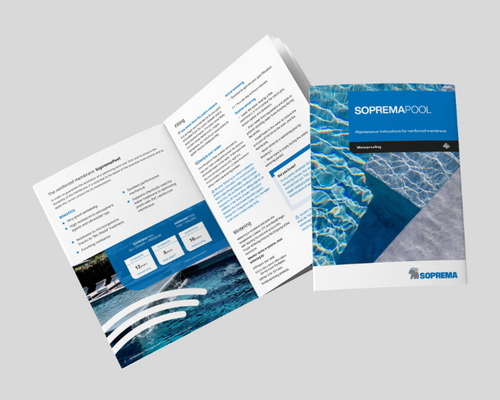Chlorine in your pool: How to use it without damaging the membrane
Why a resistant membrane makes all the difference

Proper water maintenance is essential not only for hygiene and safety but also for the longevity of the materials used in your pool. One of the key elements is the correct use of chlorine, a widely used disinfectant known for its effectiveness.
Chlorine helps eliminate bacteria, algae, and other microorganisms that thrive in pool water, especially as temperatures rise. However, chlorine must be used carefully and in the right amounts. When overdosed or not stabilized properly, it can become aggressive, potentially causing discoloration or even wrinkling of the waterproofing membrane over time.
That’s why it’s crucial to choose high-quality reinforced membranes that are specifically designed to resist chlorine and other common water treatment chemicals. SopremaPool membranes are engineered to withstand automatic treatment systems such as salt electrolysis or dosing pumps, ensuring long-term durability even under intensive use.
To keep your membrane in excellent condition, we also recommend:
- Maintaining a balanced pH level between 7.2 and 7.6.
- Avoiding direct contact between chemicals and the membrane.
- Regularly cleaning the waterline with the right tools such us the SopremaPool Magic Sponge.
With just a few simple steps, you can keep your water clear and your membrane protected — for a safe, long-lasting pool experience.
Want to go deeper into pool care?
Discover all the best practices in our official SopremaPool Maintenance Manual — your go-to guide for long-term membrane durability.

